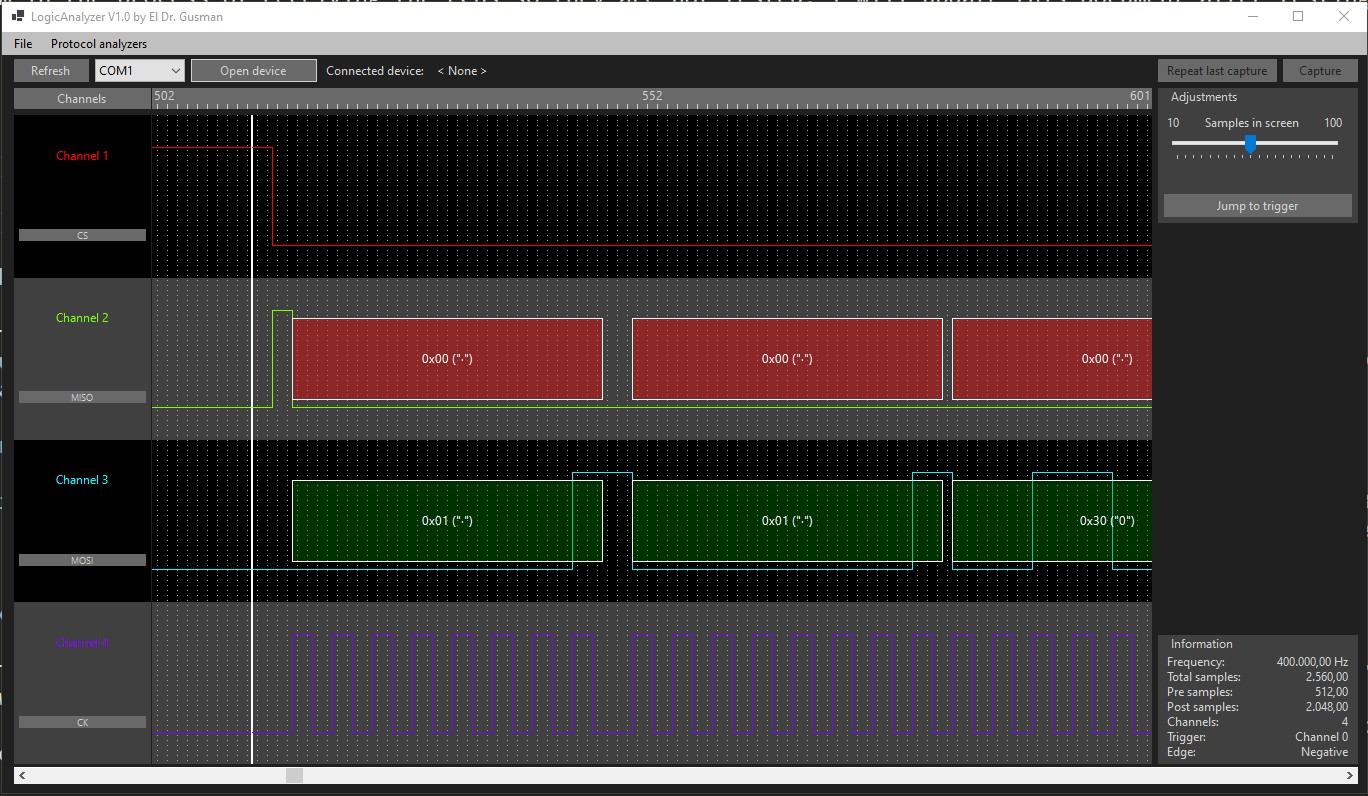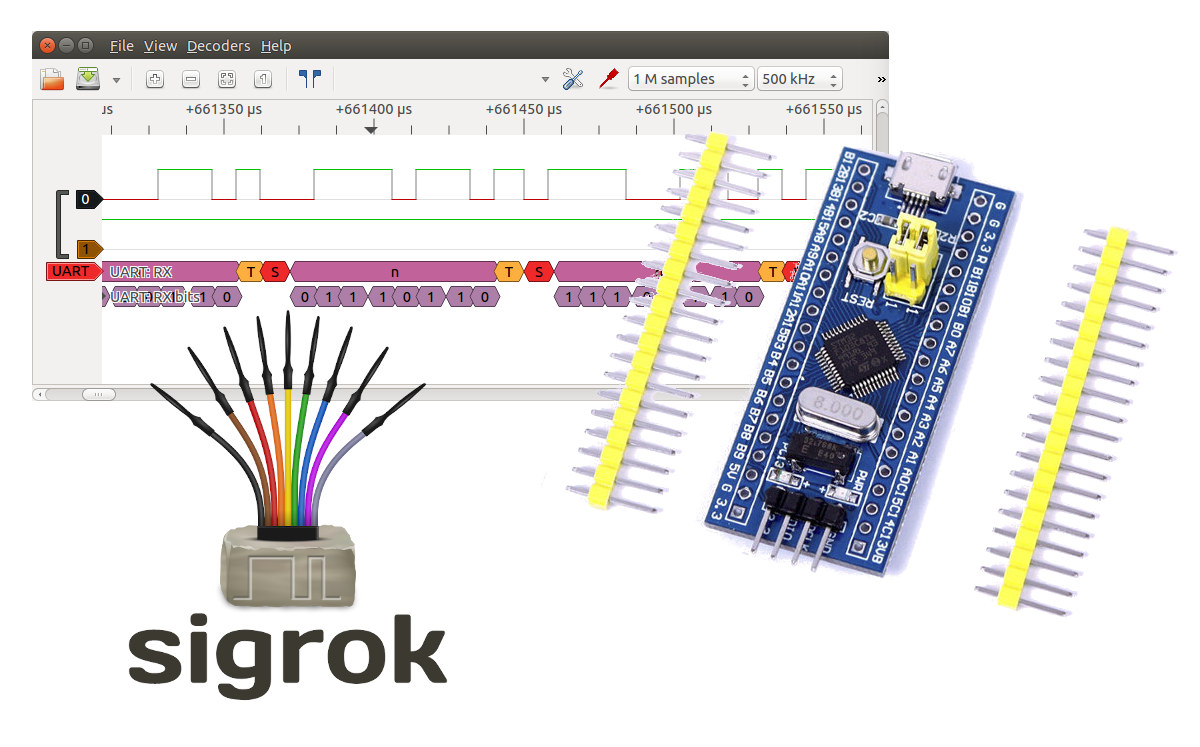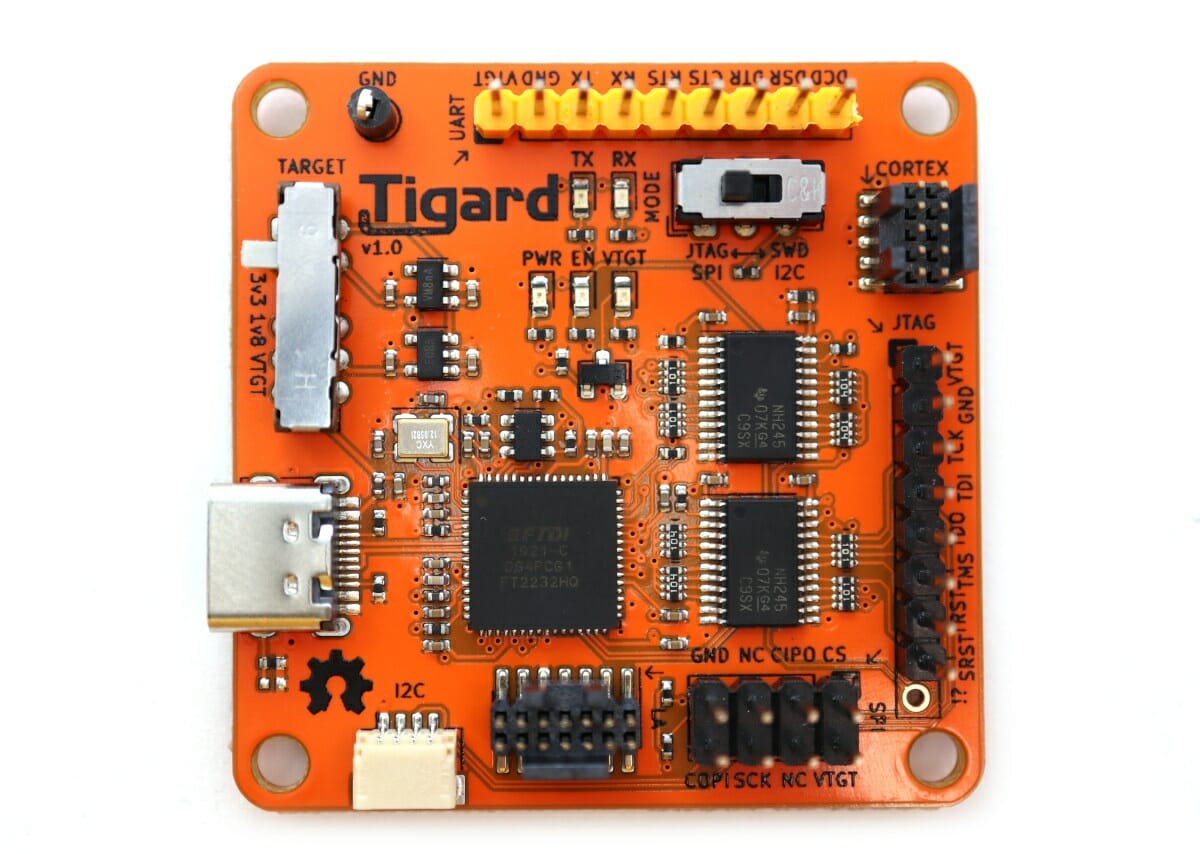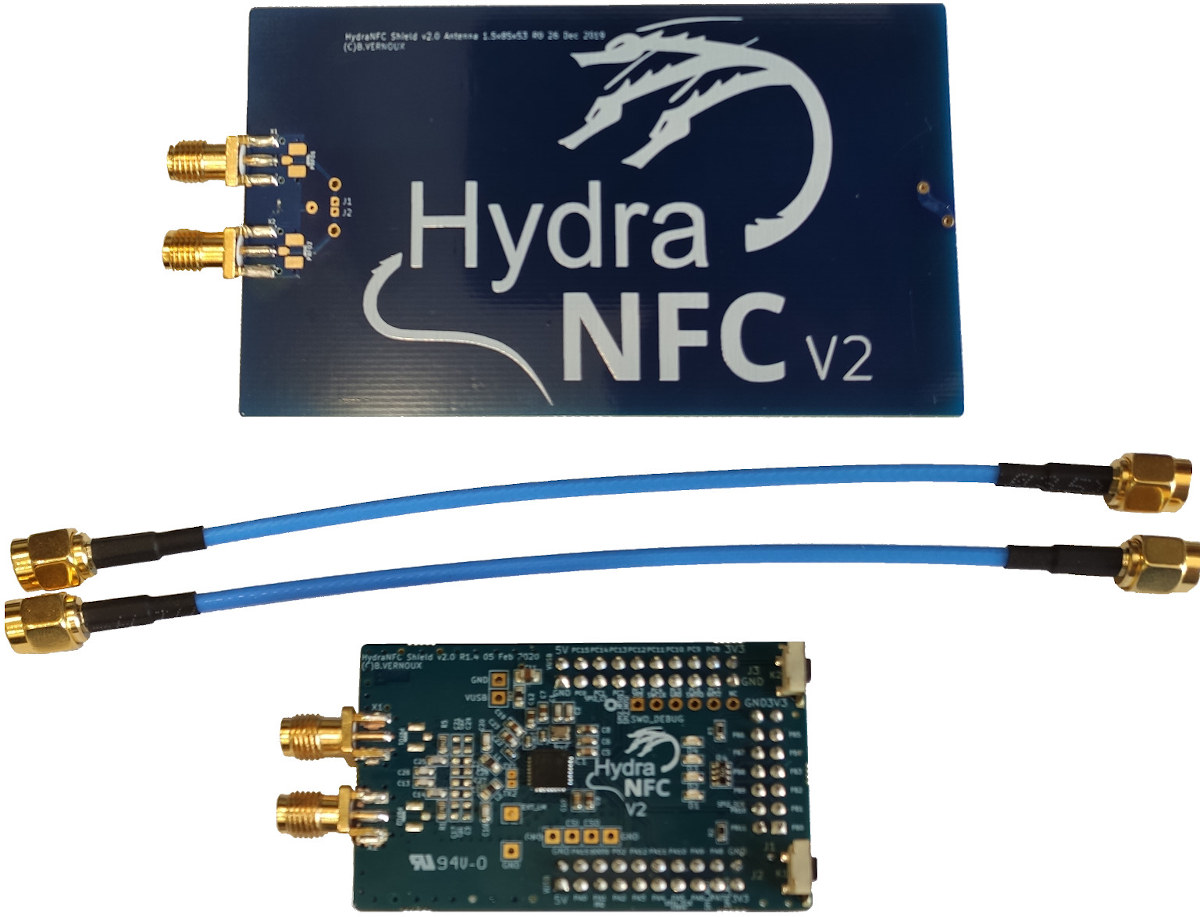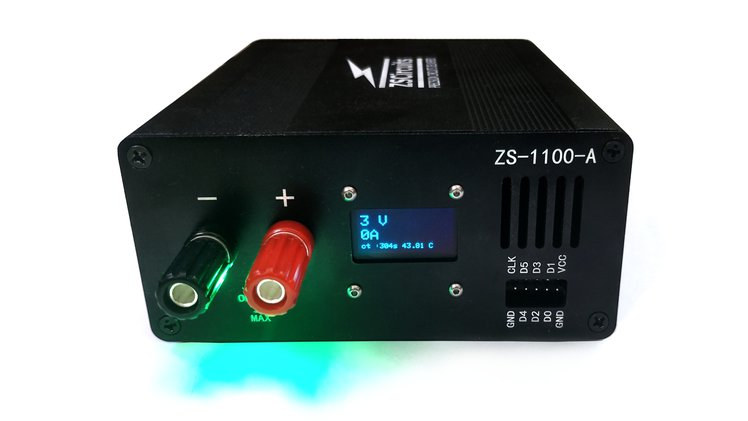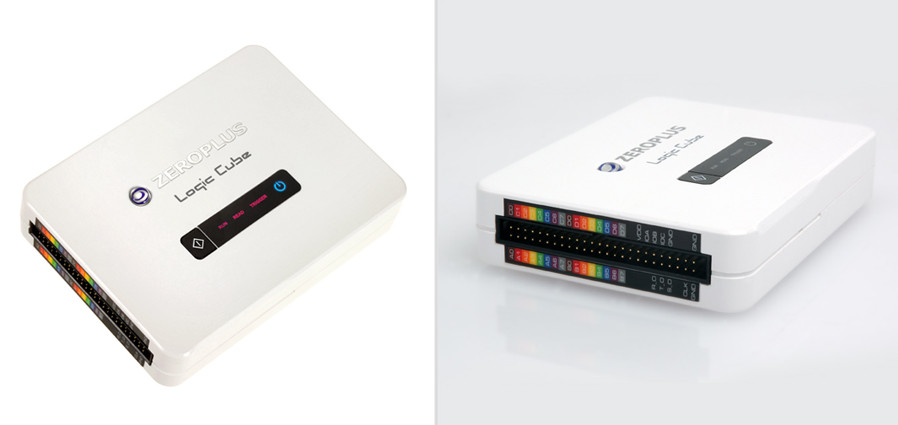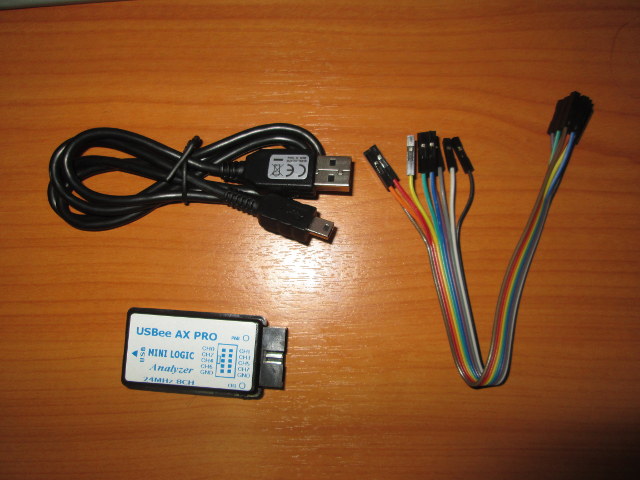MCU boards, including the $1.5 BluePill board, have been used as cheap logic analyzers for years, notably with Sigrok open-source software. So it should come as no surprise the $4 Raspberry Pi Pico board can also be used as a logic analyzer, with one developer claiming it can deliver 100 Msps, or the performance obtained with a 1.6 GHz CPU, thanks to the PIOs from the Raspberry Pi RP2040. Hackaday reported about a Sigrok driver for the Pico last March, but the topic was brought to our attention via a post on Hackster.io about an open-source Windows program developed from scratch to transform the Raspberry Pi Pico board into a logic analyzer capable of 100 Msps. Agustín Gimenez Bernad (aka gusmanb)’s LogicAnalyzer program offers up to 24 digital channels, pre, and post-trigger sampling, edge trigger and pattern trigger up to 16 bits. It can work with the Raspberry Pi Pico […]
Turn $1.5 Blue Pill STM32 board into a Sigrok compatible logic analyzer
“Blue Pill” is a popular STM32 development board thanks to its low cost – now as low as $1.50 on Aliexpress – and Arduino compatibility via the STM32duino project. People have created all sorts of projects around the tiny STM32 board, but I find Mark (aka thanks4opensource) buck50 test and measurement firmware very interesting as it turns the Blue Pill board into a logic analyzer compatible with the open-source Sigrok command-line tool and PulseView GUI. Mark explains the firmware is still at the beta stage, so bugs will most likely have to be fixed. Nevertheless, Buck50 firmware should enable the following key features on the Blue Pill board: 8 channel, 6+ MHz logic analyzer Approx. 5K sample buffer depth Samples stored only at signal edges for efficient memory usage Complex triggering via user-defined state machine supporting combinations of sequential (“A then B then C”) and logical-OR (“A or B or […]
Tigard is an open-source FT2232H board for hardware hacking (Crowdfunding)
There is plenty of cheap 5V or 3.3V USB to TTL debug boards used to access the serial console and/or program boards, but FTDI FT2232H based Tigard open-source hardware board does much more than that as it supports multiple protocols, multiple voltages for hardware hacking & debugging. The developer explains Tigard can be used as a drop-in replacement for dozens of other hardware tools based on FTDI chips and includes native support OpenOCD, FlashROM, and more. Tigard board specifications: Main chip – FTDI FT2232HQ dual high-speed USB to multi-purpose UART/FIFO IC Primary port dedicated to UART including access to all flow control signals Secondary port shared among dedicated headers for SWD, JTAG, SPI, and I²C USB – USB 2.0 Type-C (480 Mbps) port I/Os 9-pin UART header Qwiic I2C connector 8-pin SPI & I2C header 8-pin JTAG header 10-pin Cortex debug header 14-pin logic analyzer (LA) header to observe device-level […]
HydraNFC Shield v2 Delivers Up to 1600 mW with STMicro ST25R3916 NFC Chipset
When Benjamin Vernoux is not working on open-source firmware & tools for AirSpy R0/R2/mini SDR, he spends his time on other projects such as HydraBus STM32 board with NFC support which we covered back in 2014. The HydraNFC Shield that came with the board was based on Texas Instruments TRF7970A NFC chipset with limited features and not compliant with any RF/NFC standard. Benjamin has now launched HydraNFC Shield v2 powered by STMicro ST25R3916 NFC chipset and equipped with a differential antenna. The new version of the shield still works with the original HydraBus board and allows much more output power (1,600mW vs 200 mW) and supports a wider range of NFC features & standards. HydraNFC Shield v2 features and specifications: NFC Chipset – STMicro ST25R3916 high-performance NFC universal device supporting NFC initiator, NFC target, NFC reader and NFC card emulation modes Antenna – Differential antenna with power up to 1600mW […]
ZS1100A IoT Power Meter Supports Sigrok Open-Source Software (Crowdfunding)
A few months ago, I tested Qoitech Otii Arc power meter & DAQ system designed for developers of IoT devices, and fount out it would be incredibly useful to developers of battery-operated devices since it shows voltage and current graphs synchronized with the serial output making it easy to see where software might be optimized. The system can also capture analog and digital signals from the DUT and emulate batteries with user-defined characteristics. But this weekend, I’ve come across a very similar solution with ZS1100A IoT power meter that also happens to be compatible with Sigrok open-source signal analysis software, and the corresponding Pulseview GUI. ZS1100A IoT power meter specifications: Measurements Output Voltage Range – 0 to 6 V programmable in 10 mV steps with +/- 5mV accuracy, Current Measurement Range – -0.5 A to 1.5 A (linear range) with < 0.1 μA resolution, accuracy of 1% of measured value […]
Sigrok Compatible ZeroPlus Logic Cube LAP-C USB Logic Analyzers Support up to 32 Channels, 75 MHz Bandwidth
Back in 2015, I discovered USB123 USBee AX PRO, an ultra cheap logic analyzer (now $5 shipped) with 8 channels, and up to 24 MHz. I purchased one at the time, and successfully tested it with Sigrok & Pulseview open source tools that now work in Linux, Windows, Mac OS, FreeBSD, Android, and several other operating systems. As I read through my list of RSS feeds today, I noticed Peter Scargill had tested ZeroPlus Logic Cube Lap-C 322000 logic analyzer also connected to your PC via USB, but with better specifications including 32-channels, and 75 MHz. Peter used the company’s Windows software (ZEROPLUS Logic Analyzer LAP-C_Standard_V3.14.03), but a quick search confirmed ZeroPlus Logic Cube Lap-C family is supported by Sigrok. LAP-C 322000 is the top model from the family with the following hardware specifications: Sample Rate – Internal clock (timing mode): 100Hz~200MHz; external clock (state mode): 100MHz Bandwidth – 75MHz […]
BayLibre ACME Cape for BeagleBone Black Measures Power and Temperature with Sigrok
Sigrok open source signal analysis software suite had a major release last week-end with libsigrok 0.4.0, libsigrokdecode 0.4.0, sigrok-cli 0.6.0, and PulseView 0.3.0. The new version added numerous bug fixes for supported hardware such as UNI-T UT61E digital multimeter or USBee AX Pro logic analyzer, and added support for several logic analyzers, oscilloscopes, multimeters, programmable power supplies, an electronic load, an LCR meter, a scale, and one BeagleBone Black cape, namely BayLibre ACME. The ACME initiative was launched in order to get rid of the limitations of proprietary solutions, and provide an open source hardware and software multi-channel power and temperature measurements solution to the community. BayLibre ACME cape supports up to 8 probes to measure VBUS (0 to +36V), VSHUNT ( 2.5uV up to 81.92mV), CURRENT AND POWER. Three current / power probes have been developed with all featuring TI INA226 for the ADC conversion: ACME HE10 Power Probe […]
Using USB123 USBee AX Pro $5 USB Logic Analyzer with PulseView in Linux
I recently wrote about an ultra low cost USB logic analyzer called USB123 USBee AX Pro, which I bought for $9.58 on DX, but I was later informed it also goes for $5.44 on Aliexpress including free shipping to most countries, and a few dollars extra for shipping to some other countries. Nevertheless, I’ve now received it, and instead of testing it with a closed source (and cracked) Windows software, I installed and ran PulseView open source graphical interface for sigrok, which I previously tested on UNI-T UT61E digital multimeter. The package includes USBee AX PRO mini logic analyzer, 10 dupont wires for 8 channels (digital only) and 2 ground pins, as well as a mini USB to USB cable for connection to a computer. The instructions to use the logic analyzer can be found on Sigrok Wiki. My computer runs Ubuntu 14.04, but Sigrok and PulseView can also be […]


